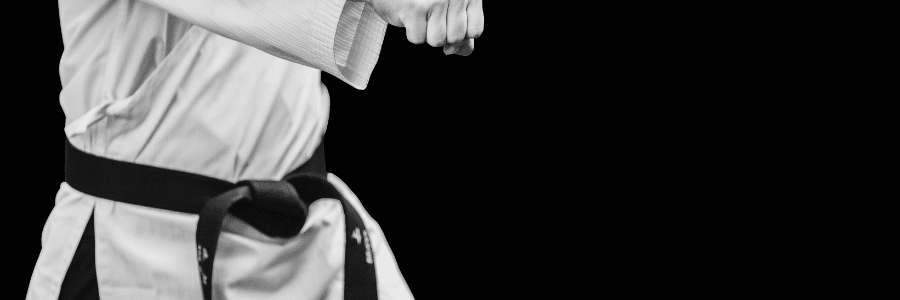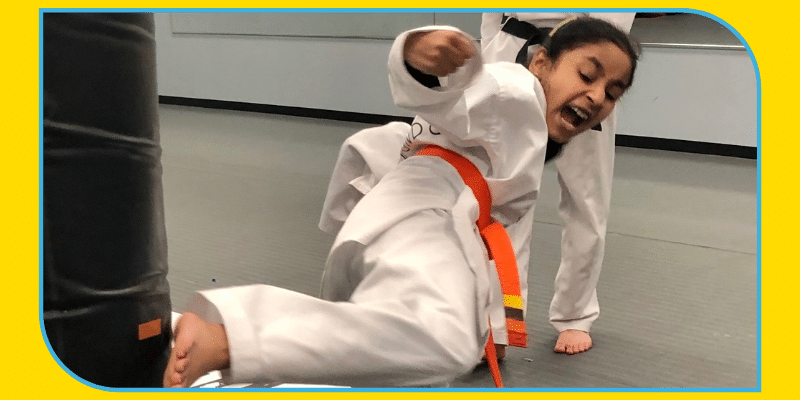4 Reasons Why Martial Artists Shout
Martial artists often generate an impressive and intimidating shout when throwing a kick or strike. In Taekwondo, we call the martial arts shout a kihap 기합 (sometimes spelled kihup, kiai, or kyup).
Shouting forces us to exhale. This strong exhale remove air from our diaphragms and brings more power and speed to attacks. Yelling also forces a subsequent inhale, which brings oxygen into our bodies. In tournaments, a powerful yell helps judges recognize when a strike is landed.
What Does Kihap Mean?
The word Kihap is the combination of two base words. Ki is generally translated as energy or life force. Hup means to coordinate, gather, and concentrate. Thus, the term kihap describes a concentration, coordination, or gathering of energy, power, or force.
In short, Kihap is a means to concentrate a martial artist’s power.
What is the purpose of the Martial Arts Shout in Taekwondo?
-
Increase Power
- Shouting ensures we breathe out at the proper time.
- Kihap creates greater consistency with technique.
- The yell reduces fear and hesitation, so we strike closer to the maximum power our body can generate.
-
Intimidate Opponents
- A fierce yell may startle and intimidate an opponent or attacker.
- A kihap synchronized with an effective strike will make the strike seem even more powerful and painful.
-
Increase Confidence
- The kihap, combined with getting into fighting stance, places our mind and body in the dojang (Taekwondo training studio), where we practice executing martial arts techniques over and over. By bringing our mental state back to the dojang, we release some of the anxiety that naturally occurs during a real-life conflict or in a tournament sparring match.
- This psychological return to the dojang transitions the mind to use muscle memory, rather than attempting to overthink the situation. This optimizes success during attacks or in tournaments.
- The kihap, combined with getting into fighting stance, places our mind and body in the dojang (Taekwondo training studio), where we practice executing martial arts techniques over and over. By bringing our mental state back to the dojang, we release some of the anxiety that naturally occurs during a real-life conflict or in a tournament sparring match.
-
To Protect Our Bodies
- If we see a strike coming and are not able to defend against it, a kihap will tighten our core muscles and may prevent organs from getting injured.
- Kihup may prevent getting the wind knocked out of you, since the lungs have been emptied of air.
- A loud exclamation is a natural response to pain. Further, according to some martial artists, it is a way for the body to get rid of an excessive ki surge.
Using a Martial Arts Shout During Training
 During Taekwondo training, we channel our power through kihup while kicking and striking. Listen to some of our students’ kihaps here. And if you want to learn to increase confidence, generate power, and scare attackers, consider joining us on the mat for lessons.
During Taekwondo training, we channel our power through kihup while kicking and striking. Listen to some of our students’ kihaps here. And if you want to learn to increase confidence, generate power, and scare attackers, consider joining us on the mat for lessons.

